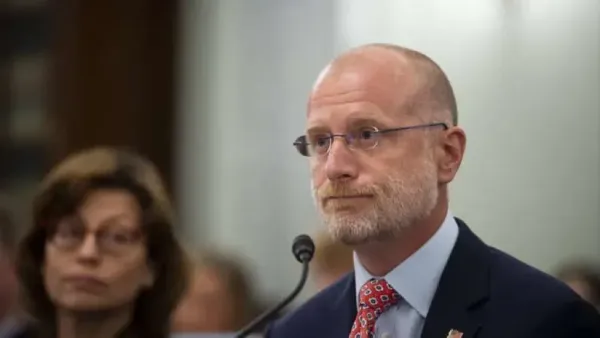Why BroadbandCensus.com Supports the National Broadband Strategy Statement
WASHINGTON, December 5 – BroadbandCensus.com was founded January 2008 after the experience of trying to use the Freedom of Information Act to obtain some very basic broadband information: the names of the carriers operating in each ZIP code.
Drew Clark
Blog Entries
Editor’s Note: This blog entry was originally posted as a response to a post on the Open Infrastructure Alliance listserv, about the National Broadband Strategy effort that Jim Baller, of Baller Herbst Law Group, has been shepherding.
WASHINGTON, December 5 – I founded BroadbandCensus.com in January 2008 after my experience of trying to use the Freedom of Information Act to obtain some very basic broadband information: the names of the carriers operating in each ZIP code. We have not yet succeeded in this task.
We don’t pretend that this data is in itself crucial or even important broadband information. Rather, it is a simple building block upon which citizen-users are empowered to build, through crowdsourcing, new layers of public information about speed, price, availability, reliability and competition.
The fight to get data is still important, and it shouldn’t be abandoned. Indeed, the possibility of getting this kind of data is the very reason that I am optimistic about the momentum that Jim Baller has been building behind this national broadband strategy. This is one key reason that BroadbandCensus.com is a proud signatory of the strategy statement.
At the event on Tuesday, I stood up and asked Larry Cohen, head of the Communications Workers of America and its speedmatters.org web site, whether he would be willing to also include carrier-specific information (i.e. whether a particular speed tester is using Comcast, Verizon Communications, or someone else). He said yes. (CWA has been very involved in Jim’s coalition-building.)
In other words, once CWA implements what Cohen said it would – on speedmatters.org or elsewhere – the public would then know not only which areas of the country have the fastest and slowest speeds. It would also know which carriers, in all different parts of the country, have the fastest and slowest speeds. Additionally, as more carriers begin to implement bandwidth tiers and caps, the need for a variety of services to monitor the carriers’ behavior becomes all the more necessary.
There are so many players that could be involved in these efforts. Besides speedmatters.org, which does have an impressive collection of data, there is, of course, DSL Reports. And – dare I mention it – there is Connected Nation. For all the criticism that Connected Nation has been subject to, it is worth noting that they have assembled an impressive amount of location- and infrastructure-specific broadband information. All that needs to happen, now, is for that data to be linked back up to the carriers that provided it — so that citizen-consumers can take the data and make good use of it. The same holds true for data collected by states, like Massachusetts, California, North Carolina and Nebraska. Think of what the users of Google Earth add on top of a simple, physical map – whether that map is generated based upon resources of the federal government, state and local governments, or private sector actors.
Being involved in creating this kind of a public mashup of carrier-, government- and citizen-data is the very purpose of BroadbandCensus.com. And if CWA and others are willing to share and open up their information (for example, all of the content on BroadbandCensus.com is published under a Creative Commons Attribution Noncommercial License), there will be much better results than if any individual data aggregator was acting alone.
Jim Baller has been able to get all the key parties together. And as everyone has acknowledged that there needs to be some kind of a strategy, everyone has also acknowledged that there needs to be some kind of metrics, or ways of measuring true performance toward broadband objectives. I see the broadband mashup that I’ve outlined above as a crucial guardian of carrier accountability.
There will undoubted be many questions about where and how to undertake deployment decisions. Such decisions will not be made by a single actor, e.g. the federal government. They will instead be made by thousands of entities and individuals, including the feds, the state broadband and telco bodies, regional development officials, community broadband activists, owners of homes and apartments “with tails,” and, of course, individual carriers and customers. Many of these decisions – i.e. universal service fund deployment – cannot be made on an economically rational basis without this data.
However this all takes shape, the broadband marketplace will be better served by transparency about what is happening in the market – with speeds, with prices, with granularity measures of availability, with consumer ratings on reliability and quality, and, of course, with as complete information as possible on _who_ those competitors are.
This is why BroadbandCensus.com supports the national broadband strategy effort that Jim Baller has been piecing together, and why we are very encouraged by everyone talking about it together.
Broadband Breakfast Club:
Editor’s Note: Join the next Broadband Breakfast Club on Tuesday, December 9, on how broadband applications – including telemedicine – can harness demand for high-speed internet services. Register at http://broadbandbreakfast.eventbrite.com











Member discussion